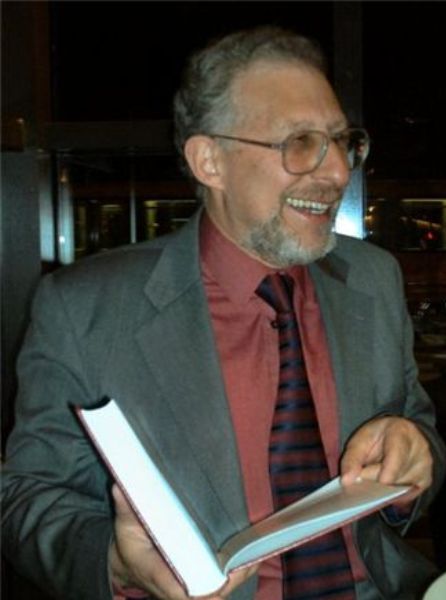 Over the last three weeks I have reported my analysis of over 800 published reports of drug shortages. I have reviewed the history of drug shortages, elucidated their causes, and analysed the harms and errors that can result. But what about solutions to the problem?
Over the last three weeks I have reported my analysis of over 800 published reports of drug shortages. I have reviewed the history of drug shortages, elucidated their causes, and analysed the harms and errors that can result. But what about solutions to the problem?
The word solution comes from two IndoEuropean roots, SE and LEU.
LEU means to loosen, divide, or cut apart. This gave the Greek word λύσις, from which we get lysis and its many derivatives, analysis, autolysis, catalysis, dialysis, electrolysis, epidermolysis, fibrinolysis, glycolysis, hydrolysis, lipolysis, paralysis, proteolysis, thrombolysis, urinalysis, and many more. In Latin lues meant a plague, typically syphilis (lues venerea)—organ dissolution from being dissolute. Via Old Norse and Old English we get simpler words, such as lose, loose, loss, and less. Add to LEU the reflexive prefix SE, as in self and suicide, and we get solve, soluble, solute, and solution, as well as absolute, dissolute and indissolute, resolute and irresolute. And the double derivative solvolysis.

So, to solve is to reveal an answer by loosening or cutting the knots that bind it, like cutting the Gordian knot. But can we cut the Gordian knot of drug shortages?
A drug shortage can be defined as a failure of the availability of a medicinal product to match the demand for it, driven by clinical need, locally, nationally, or internationally. Prevention is the ideal and methods to deal with shortages when they occur are needed.
In many cases shortages cannot be prevented, because the causes are unpredictable. This includes natural disasters, conflicts and governmental diktats, difficulties with animals, impaired plant growth, and contamination, bacterial or chemical. Concerns over the quality of a product can lead a manufacturer to stop production or a regulator to close down a plant. Or a financial crisis can lead to closures, which may have at least partly explained the sudden major increase in shortages in 2011–12 following the financial crisis of 2007–8.
However, some shortages are predictable. For example, a company that takes over another may abandon its products. Companies intending takeovers should give warning about such possibilities and highlight the products that are likely to be affected.
Expiry dates of medicinal products are highly conservative and underestimate the shelf lives of many products; they could be extended.
When shortages occur, substitutes are often used. Me-too drugs may in this way find some use, although I have found very few reported instances of this, and often substitutes are not me-toos. Adverse reactions to substitutes have also been reported from time to time, when, for example, differences in potency are not recognized. The use of biosimilars when shortages of originator molecules occur has been occasionally discussed.
In recent years several reports have made recommendations on how to prevent and deal with shortages. The European Medicines Agency (EMA) has prepared documents, including reports from the HMA/EMA Task Force on Availability of Authorised Medicines for Human and Veterinary Use. [The HMA is a network of the Heads of Medicines Agencies, the National Competent Authorities, whose organizations are responsible for the regulation of medicinal products for human and veterinary use in the European Economic Area.]. The US Food and Drug Administration (FDA) has issued a report titled “Drug Shortages: Root Causes and Potential Solutions”, on which the Healthcare Supply Chain Association (HSCA) has commented at length. And the reports of the Association of Health-System Pharmacists, which I highlighted last week, also contain extensive recommendations. There are also provisions in the Food and Drug Administration Safety and Innovation Act (FDASIA; Title X). I have summarized some of the various recommendations in Table 1.
One of the derivatives of the IndoEuropean root LEU is the word lorn, meaning lost or abandoned, which is now itself obsolete but which survives in words such as lovelorn and forlorn. A forlorn hope was originally not a hope at all. The phrase comes from the Dutch verloren hoop (pronounced hope), meaning a lost troop, soldiers who were sent out as the vanguard of an attack, in the expectation that they would not survive. I suspect that many of the suggestions for preventing and dealing with drug shortages may share the same fate.
Table 1. Some recommendations for preventing drug shortages and dealing with them when they occur; I report them here and do not necessarily endorse them
| Increasing awareness • quantification of the harms that shortages can cause • better data on actual shortages (frequency, intensity, and duration) • informing the public and the news media when shortages are expected or occur, including easily accessed websites (manufacturers and regulators) Better use of medicines • longer expiry dates • use of me-toos and biosimilars Modification of prescriptions • allow hospital pharmacists to repackage medicines in order to share with other hospitals • allow pharmacists to substitute alternative formulations, for example 28 tablets of 5 mg rather than 14 tablets of 10 mg, without consultation with the prescriber • allow pharmacists to substitute alternative medicines expected to be equally efficacious and safe, after consultation with the prescdriber and patient/carer Requirements of manufacturers • to warn about expected difficulties in supply as soon as possible, including assessment of the impact of the expected shortage (see the EMA’s proposed template for shortage notification) • to produce risk management plans • to warn about takeovers well in advance and specify medicines whose production may be stopped • to stock larger amounts (i.e. mitigating the “just in time” policy) • to provide the regulator with information on the volume of sales of the medicinal product when asked • to record and review all complaints about quality and to recall affected products; to inform the regulator of any defect detected that could result in a recall or abnormal restriction on supply and the likely countries affected • to ensure that sufficient supplies will be available for clinical trials before the trial starts Incentives to manufacturers • to produce medicines that are less profitable • relaxed regulations when recovery is required Recognition and reward of manufacturers’ activities • rating good manufacturing practices, including quality management systems • financial incentives to continue producing older medicines Duties of purchasers • to keep well informed • to have contingency plans for purchasing, storage, preparation, and dispensing of the relevant medicine and possible alternatives • to predict cost implications • to have procedures in place for deciding on how to use substitutes, for approving them, and for advising about appropriate use and rationing in appropriate patients • to ensure widespread communication with prescribers and patients • to avoid speculative stockpiling Generics suppliers • encourage local private suppliers • establish national suppliers |
Jeffrey Aronson is a clinical pharmacologist, working in the Centre for Evidence Based Medicine in Oxford’s Nuffield Department of Primary Care Health Sciences. He is also president emeritus of the British Pharmacological Society.
Competing interests: None declared.
